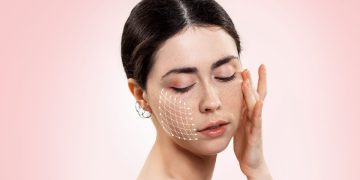The pursuit of radiant, healthy skin often leads us to a cabinet filled with potent serums and treatments, each promising transformative results. Yet, the path to achieving these results is not as simple as applying one powerful ingredient after another. In fact, without a strategic approach, this well-intentioned ritual can lead to a compromised skin barrier, redness, stinging, and inflammation—the very opposite of the desired glow. The art and science of layering active ingredients is the cornerstone of an effective, advanced skincare routine. So, how can you harness the power of these potent formulas without triggering irritation?
This question is more relevant than ever in an era of increasingly sophisticated at-home skincare. The answer lies in understanding three fundamental principles: the critical role of pH balance in activation and efficacy, the complex chemical relationships that dictate ingredient compatibility, and a logical, skin-respecting order of application. Mastering this trifecta transforms a potentially chaotic mix of products into a harmonious, synergistic symphony that delivers visible, lasting benefits without compromising skin health.
The Foundation of Function: Why pH Balance is Non-Negotiable
pH, which stands for “potential of Hydrogen,” is a scale that measures how acidic or alkaline a substance is, ranging from 0 (highly acidic) to 14 (highly alkaline). The skin’s surface is protected by the acid mantle, a thin, protective film with a naturally acidic pH of approximately 4.5 to 5.5. This acidic environment is crucial for maintaining a healthy skin barrier, inhibiting the growth of harmful bacteria, and supporting the activity of essential enzymes.
When layering actives, the pH of each product is not just a minor detail; it is the determining factor for whether an ingredient will work at all and how it will interact with the skin and subsequent products.
The pH-Dependent Powerhouses:
- Vitamin C (L-Ascorbic Acid): This gold-standard antioxidant is notoriously pH-sensitive. To be effectively absorbed and protect against free radicals, it requires a highly acidic environment, typically between pH 2.0 and 3.5. Applying a product with a higher, more neutral pH immediately before or after a Vitamin C serum can raise the skin’s surface pH, rendering the Vitamin C less effective or completely inactive.
- Alpha and Beta Hydroxy Acids (AHAs & BHAs): Chemical exfoliants like glycolic acid (AHA) and salicylic acid (BHA) also require a low pH (around 3-4) to function. At this acidity, they exist in their active, free-acid form, allowing them to effectively break down the bonds between dead skin cells. If the pH is too high, they convert to a salt form and lose their exfoliating potency.
- The Exception – Niacinamide: This versatile B-vitamin is most stable and effective at a more neutral pH, around 5-7. Forcing it into a highly acidic environment can cause it to break down and convert into niacin, which may cause temporary redness and flushing for some individuals.
The Layering Rule Derived from pH:
The cardinal rule is to apply products in order of decreasing pH. This means your lowest-pH actives (like Vitamin C and direct acids) should be applied first to clean, dry skin to ensure their potency is not compromised. Ingredients that prefer a neutral pH, like niacinamide and peptides, should follow. This sequential application respects the functional needs of each ingredient and prevents the pH conflicts that lead to inefficacy and potential irritation.
The Chemistry of Compatibility: Navigating Ingredient Relationships
Beyond pH, the chemical structure of active ingredients dictates how they interact with one another. Combining incompatible actives can lead to neutralization, degradation, or the formation of new compounds that are ineffective or irritating.
The Most Critical Combinations to Understand:
- Niacinamide and Vitamin C: This is one of the most debated topics in skincare. Older studies suggested that combining high concentrations of L-Ascorbic Acid with Niacinamide could lead to the formation of niacin and cause flushing. However, modern, stabilized formulations have largely overcome this issue. The key is the type of Vitamin C and the formulation. While it’s generally safe to use them together, purists may still prefer to separate them—using Vitamin C in the morning and Niacinamide at night—to guarantee the absolute peak performance of both.
- Direct Acids and Retinoids: This is a combination that demands extreme caution. Both AHAs/BHAs and retinoids (like retinol and tretinoin) can significantly increase skin cell turnover and can be individually irritating. Using them simultaneously, especially in high concentrations, dramatically increases the risk of barrier damage, leading to severe dryness, peeling, and sensitivity. The safest approach is to avoid applying them in the same routine. A common strategy is to use acids in the morning and retinoids at night, or to alternate them on different nights, allowing the skin adequate recovery time.
- Peptides and Acids: Peptides are short chains of amino acids that signal the skin to produce more collagen. They thrive in a neutral pH environment. Applying a low-pH acid immediately before or after a peptide serum can alter the pH, potentially denaturing the peptides and rendering them ineffective. It is best to separate their use by several hours or use them in different routines altogether.
- Benzoyl Peroxide and Retinoids: Benzoyl Peroxide is a potent antibacterial used for acne. It can oxidize and deactivate certain forms of retinoids if applied together. While some modern prescription formulations are designed to be combined, as a general rule for over-the-counter products, it is wise to use them at different times (e.g., BP in the morning, retinol at night).
The Guiding Principle:
When in doubt, simplify. The goal is not to use every active at once, but to curate a routine where the ingredients work in harmony. If you are introducing a new active, do so one at a time and patch test to see how your skin responds before adding another potentially conflicting product.

The Strategic Sequence: A Step-by-Step Layering Guide
Understanding pH and compatibility allows us to build a logical, effective order of application. The fundamental principle is: Thinnest to thickest, and water-based before oil-based.
Here is a practical, step-by-step guide for layering actives in a single routine:
- Step 1: Cleanser. Start with a clean canvas. Use a gentle, low-pH cleanser that respects your acid mantle without stripping the skin.
- Step 2: Low-pH Actives on Dry Skin (Wait 5-10 minutes). This is the stage for your most pH-dependent ingredients.
- Vitamin C Serums (L-Ascorbic Acid): Apply to completely dry skin. Its low pH prepares the skin for what follows.
- Direct Acids (AHA/BHA Toners or Serums): If not using Vitamin C, this is when you would exfoliate. Do not combine with Vitamin C in the same routine unless your skin is highly tolerant and the formulas are designed for it.
- Wait Time Rationale: Allowing these acidic products to fully absorb and dry down prevents them from mixing with and altering the pH of the next product, ensuring their efficacy.
- Step 3: Other Water-Based Serums (Wait 2-3 minutes). Once the low-pH actives have been absorbed, you can apply other treatments.
- Niacinamide Serums: Their neutral pH makes them ideal for this step.
- Hyaluronic Acid Serums: These hydrators can be applied to slightly damp skin to pull moisture into the skin.
- Peptide Serums: They can be layered here, safely distanced from the strong acids.
- Step 4: Eye Cream. Apply a targeted treatment to the delicate eye area.
- Step 5: Treatment Creams (Retinoids, Acne Spot Treatments). This is the stage for thicker treatment products. If using a prescription retinoid, it would be applied here, after your serums have dried. Its efficacy is not pH-dependent in the same way, and this placement can help buffer potential irritation.
- Step 6: Moisturizer. This step seals in all the previous ingredients and provides essential barrier support. It helps to prevent transepidermal water loss and calms any potential reactivity from the actives.
- Step 7: Sunscreen (AM only). The non-negotiable final step in your morning routine. It protects your skin and the investments you’ve made with your actives from UV damage.
Conclusion: The Delicate Balance of Power and Patience
Layering active ingredients is the ultimate expression of personalized skincare, but it demands respect for the skin’s biology and the chemistry of the products themselves. It is a practice built on the pillars of knowledge—understanding pH, respecting ingredient compatibility, and following a logical order—rather than on the brute force of applying multiple potent products.
The most effective routine is not necessarily the most complex one. It is the one that is thoughtfully curated, patiently executed, and consistently followed. By listening to your skin and adhering to these scientific principles, you can confidently build a regimen that unlocks the true, synergistic potential of your actives, guiding you toward a state of healthy, resilient, and truly radiant skin.













































